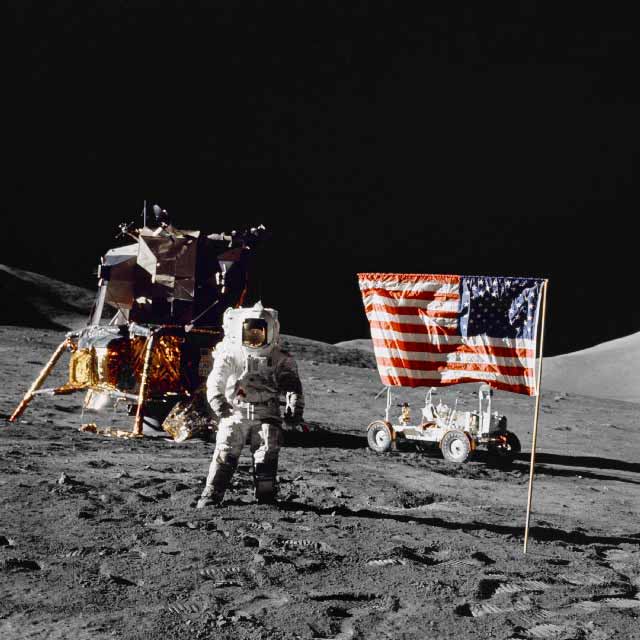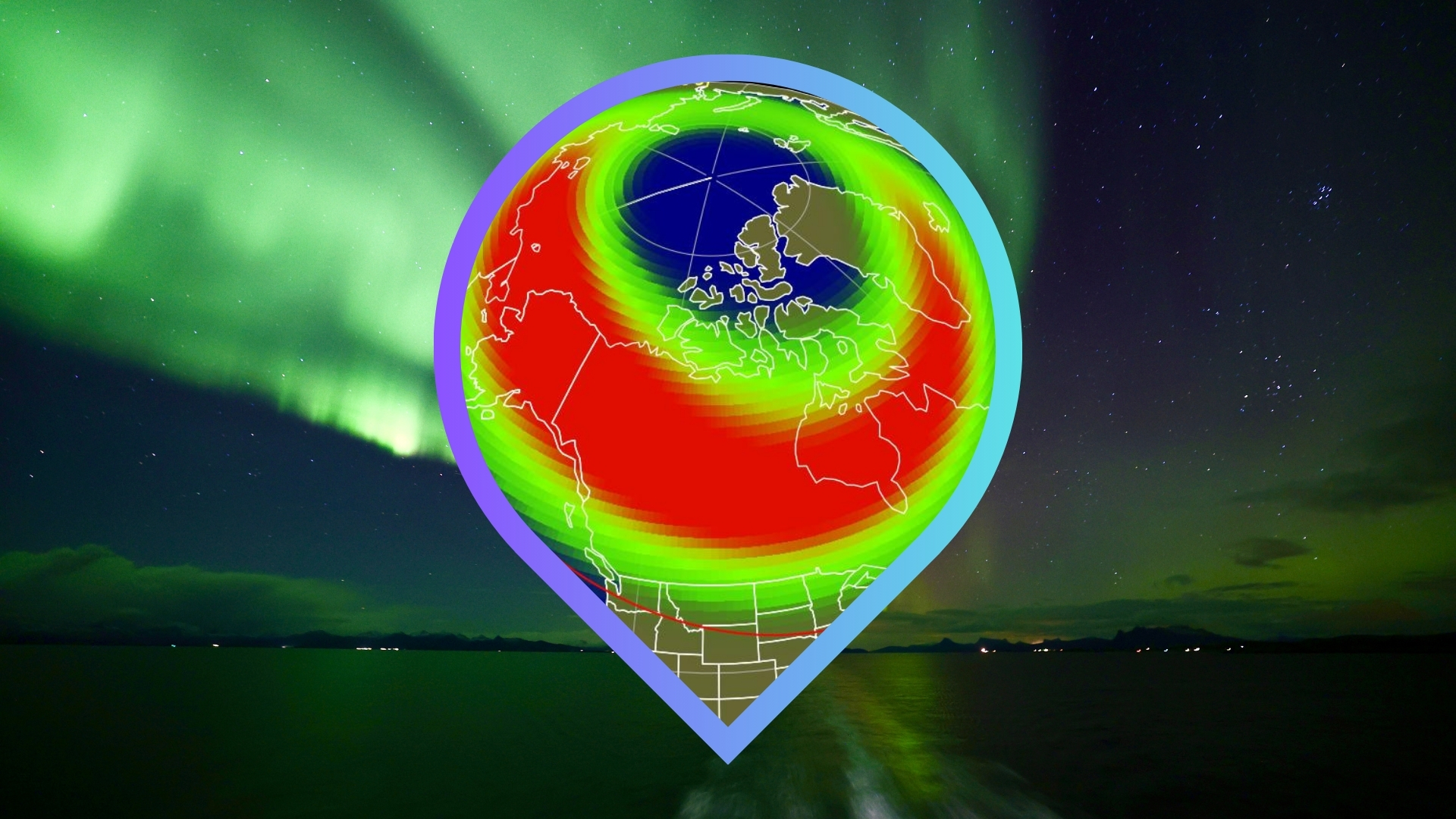NASA's Legacy: The Quest for the Moon

The firstmanned spaceflights occurred in the shadow of the tensest moments of the ColdWar between the United States and the Soviet Union. With the world?s Europeanpowers in disarray after World War II, the United States and the Soviet Unionused propaganda, alliances and proxy wars to outflank the other and broadentheir respective spheres of influence. Space became another way to exertdominance over the other.
The spacerace was ?war by another means,? said Roger Launius, senior curator at theNational Air and Space Museum here. The Cold War rivals were engaging in atechnological rivalry and wanted to prove to non-aligned nations and the restof the world that they were ?second to none,? Launius said in an Aug. 25 interview.
The SovietUnion struck first in the space race, launching the first satellite, Sputnik,Oct. 4, 1957, leading to the formation of NASA a year later. The agencycelebrated its 50thanniversary this month on Oct. 1.
Thesuperpowers were roughly on parallel paths, according to Launius and JohnLogsdon, former director of the Space Policy Institute at George WashingtonUniversity here. The United States launched the firstAmerican to space, Alan Shepard, on a Mercury capsule, just about a monthafter the Soviets sent the first man, Yuri Gagarin, into orbit on a Vostokspacecraft April 12, 1961.
?The [U.S.]military had been talking about humans in space since the mid-50s on,? Logsdonsaid in an Aug. 20 phone interview. The U.S. Air Force?s Man-In-Space-Soonestproject was a conceptual program, which then was transferred to NASA controland eventually becameProject Mercury.
AmericanSpace Age
Responsibilityfor Mercury fell to NASA?s Space Task Group working at Langley Research Centerin Hampton, Va., under Bob Gilruth. The ?premier organization for humanspaceflight,? the Space Task Group later became the core of the Houston-basedJohnson Space Center (renamed from the Manned Space Flight Center in 1973),Logsdon said.
Breaking space news, the latest updates on rocket launches, skywatching events and more!
NASA?spredecessor, the National Advisory Committee for Aeronautics (NACA), also hadlooked at human spacecraft just two weeks after Sputnik launched, said TedSpitzmiller, a space historian and author of ?Astronautics: Book 1: Dawn of theSpace Age.? NACA estimated a two-year development cycle to send a human intoorbit but the orbital launcher, the Atlas, took longer than expected tocomplete, he said. John Glenn became the first American in orbit Feb. 20, 1962.
Mercury wasan experiment to see whether a human could survive the extremely rapid travelnecessary for orbit, could perform tasks while weightless and survive theforces of re-entry, Logsdon said. U.S. President Dwight Eisenhower?s incentivefor the manned program was to see if there were practical uses for humans inspace; he was prepared to end the manned space program after Project Mercury,he said.
But themanned Mercury flights commenced under newly elected John Kennedy who, unlikehis predecessor, was more interested improving the United States? prestigethrough the use of ?soft power? like the space program, Logsdon said. Kennedynoted the positive reaction from around the world to Gagarin?s spaceflight anddetermined the United States could not come in second to the Soviet Union inspace endeavors.
Saddledwith another Soviet space first and the failed U.S.-backed Bay of Pigs Invasionof Cuba, Kennedy wrote an April 20, 1961, memo to Vice President Lyndon Johnsonasking if there was a ?space program that promises dramatic results in which wecould win?? according to the NASA History Web site. The answer came back that amannedMoon landing would be just such a program.
It wasrisky but the success of Shepard?s flight gave the struggling president theconfidence to address Congress May 25, 1961, and announce the United Stateswould land a man on the moon before the end of the decade and return him safelyto Earth.
The waranalogy also applies to the budget that was required for the moon landing. Itinvolved a ?warlike mobilization? effort and was ?almost 180 degrees? from whatEisenhower had wanted, Logsdon said.
Chargedwith landing an astronaut on the moon, Project Apollo was announced July 29,1960. The proposal departed from NASA?s original 10-year plan, which had beenpresented to Congress in February 1960 and called for circumlunar flight, not alunar landing, Logsdon said.
That planwas partly based on what is considered the traditional space program paradigm,which was popularly championed by visionary Marshall Space Flight Center headWernher von Braun, who wanted to establish a space station in Earth orbit andthen travel to the moon, Logsdon said.
The middlechild
The Geminiprogram, which was announced Dec. 7, 1961, was more a predecessor to Apollothan it was a successor to Mercury, Logsdon said. Launius compares Gemini to amiddle child that is successful in its own right but oft-forgotten between thefirsts of oldest-child Mercury and the splendor of youngest child Apollo.
Gemini wasnecessary because NASA planners needed to know how to rendezvous and dock.Gemini also maintained manned activity to prevent a problematic five-year gapduring the space race with the Soviet Union, Launius said. Gemini was completedin just a year and a half, Spitzmiller said in an Aug. 20 phone interview.
Geminimissions, which often involved rendezvousing and docking with target Agenalaunch vehicles and one rendezvous between two Gemini orbiters, also helpeddevelop procedures for spacewalks and long-duration missions, he said. UntilGemini the longest U.S. manned mission was the last Mercury flight in whichGordon Cooper spent 34 hours in orbit.
Geminiastronauts were unable to perform efficient spacewalks until Buzz Aldrinperfected a new spacewalking technique during the Gemini 12 mission that wouldhelp prevent spacewalkers from exerting themselves unnecessarily.? With adoctorate in astronautics Aldrin had a better understanding of microgravitythan his fellow astronauts and he worked diligently on space rendezvoustechniques, Launius said. Aldrin developed an ?economy of movement? that isstill standard, he added.
Moon orbust
Aldrin,Neil Armstrong and Michael Collins delivered on Kennedy?s promise July 20,1969, when Aldrin and Armstrong landed on the Moon. The United States couldhave stopped the Apollo missions after Apollo 11, but the nation wanted toprove it could do it consistently, and scientists were pushing for further lunarstudies, Launius said.
In the1990s Launius had the opportunity to talk to a Russian who had worked in thedesign bureau of Soviet Chief Designer Sergei Korolev, who is credited withdriving the Soviet space program until his death in 1966. He recalls theRussian telling him: ?We weren?t ready to give up after Apollo 11. We thoughtthat was a fluke?? But after Apollo 12 landed on target and retrieved parts ofSurveyor 3 they knew they were beaten, Launius said.
Spitzmillermarks Apollo missions 11 to 17 as the ?pinnacle? of NASA?s manned spaceprogram. In addition to achieving the only human landings on an extraterrestrialobject in history, the Apollo effort also led to technological advances inpropulsion, materials, tracking and computers. From ?that point on, things seemto plateau,? he said, recalling how the manned program lost much of its fundingand push without charismatic leaders like Kennedy, who was assassinated in1963, and von Braun, who retired June 17, 1972.
Ultimately,however, it was the lack of a response by the Soviets after the Moon landingthat prompted the U.S. government to pull back on its manned space program, Spitzmillersaid.
ThreeApollo missions were cut due to reduced funding and the near-fatal accident onApollo 13, Launius said. The ramp down after Apollo was to be expected, Logsdonsaid, noting that ?Apollo was an exception? in the manned space program. Thepolitics of 1961 warranted going to the moon but the politics of 1969 did notwarrant going to Mars, he said.
With the moonlandings completed by December 1972, NASA shifted its focus to maintaining apresence in Earth orbit. With Apollo done, NASA was looking to get back to thevon Braun paradigm, Launius said.
Leftoversfrom canceled Apollo missions becameequipment for Skylab, formerly known as the Apollo Applications Program,which began in the mid-1960s. After atmospheric drag damaged the space stationduring its May 14, 1973, launch, Skylab housed three successful crewed missionsthat ended in 1974. Skylab plummeted back to Earth in July 1979.
Skylabnever was intended as anything other than an intermediate program; it was notdesigned for resupply like the International Space Station, Logsdon said.However, Spitzmiller calls Skylab a ?lost opportunity? for the United States toestablish a permanent presence in space. Apollo or Gemini probably should havecontinued to support Skylab, he said.
Even beforethe end of the Apollo Mmoon missions, the United States and the Soviet Unionwere planning a joint mission. In May 1972 U.S. President Richard Nixon andSoviet Premier Alexey Kosygin signed an agreement that led to the Apollo-SoyuzTest project. While the July 17, 1975, Apollo-Soyuz mission was technologicallyinsignificant — all the hardware previously had been used except for thedocking column — it served as a significant instrument of d?tente for Nixon, away to help improve relations between the Cold War superpowers, Launius said.
Without theSoviet Union, the manned space program would not be as far along and the nationlikely would have followed the von Braun model and not gone to the moon,Launius said. Without the space race, Spitzmiller believes that the UnitedStates would not have sent a man into orbit until the mid-1960s and not gone tothe moon until the mid-1980s, if at all.
- New Video - NASA at 50: Part 1, Part 2
- NASA?s Top 10 Most Memorable Missions
- Video - Back to the Moon with NASA's Constellation
Based in Washington DC, Clinton is a former freelance science writer for Space.com covering NASA History and Space Exploration. His work has appeared online and in print for Slate, Science, AAAS, the Society for Neuroscience, the American Chemical Society, and the American Physical Society. From October 2006 to May 2015, he acted as a staff writer and web producer for SpaceNews creating "This Week In Space History." He's currently a Content Specialist for National Geographic.
